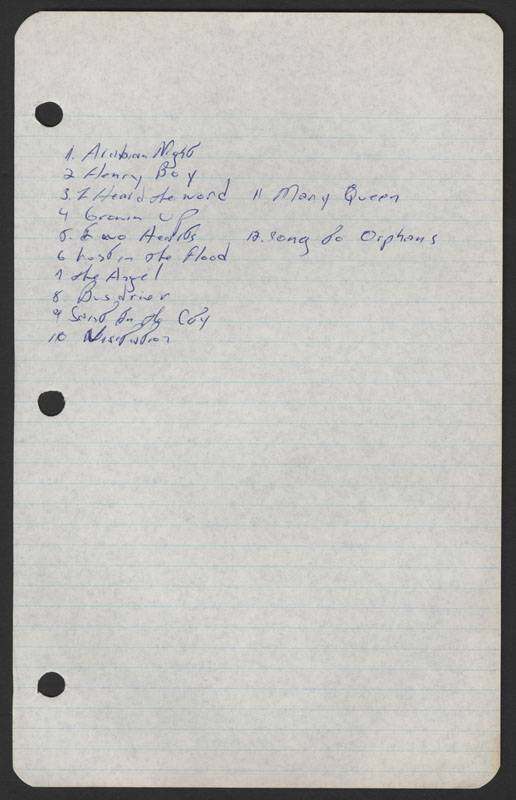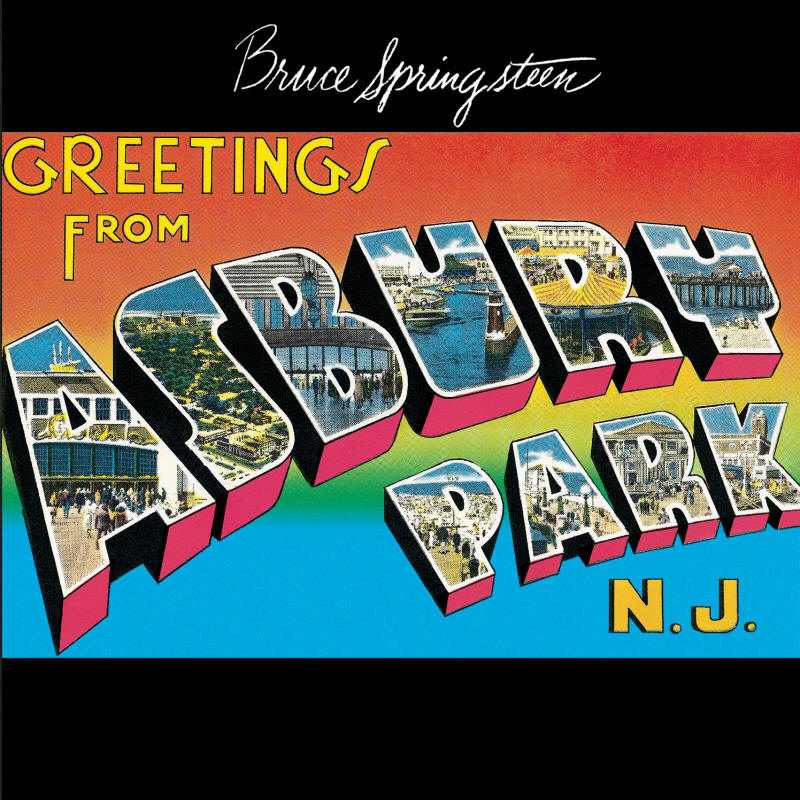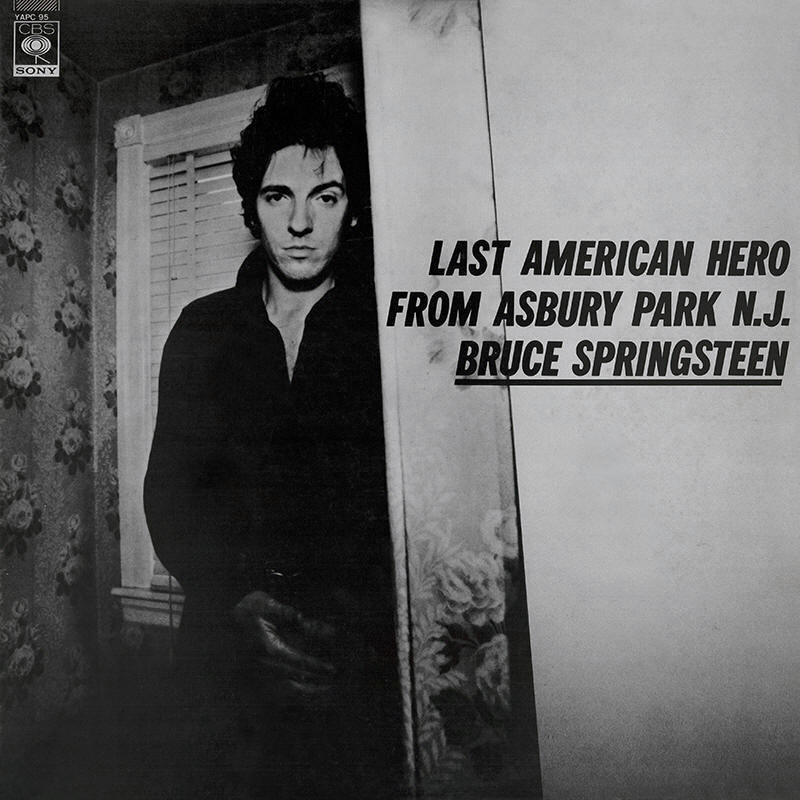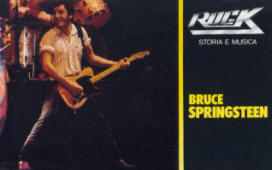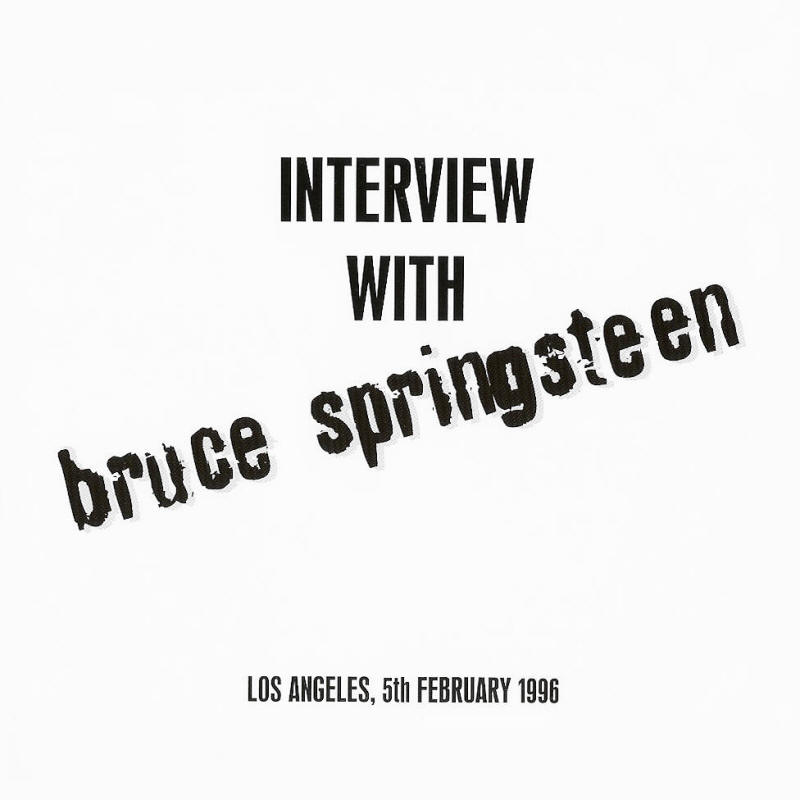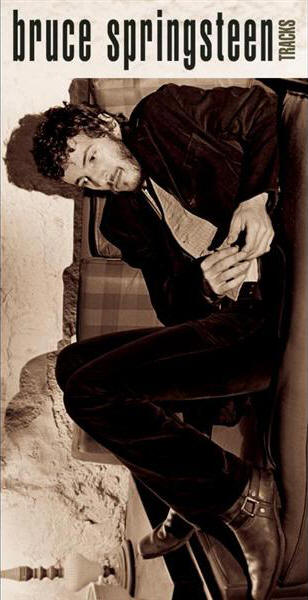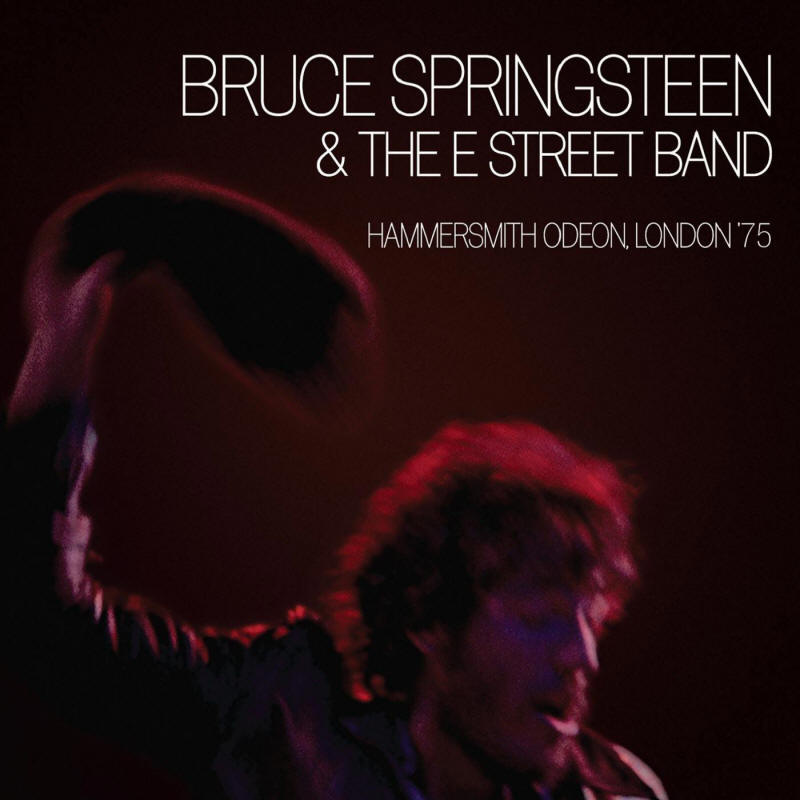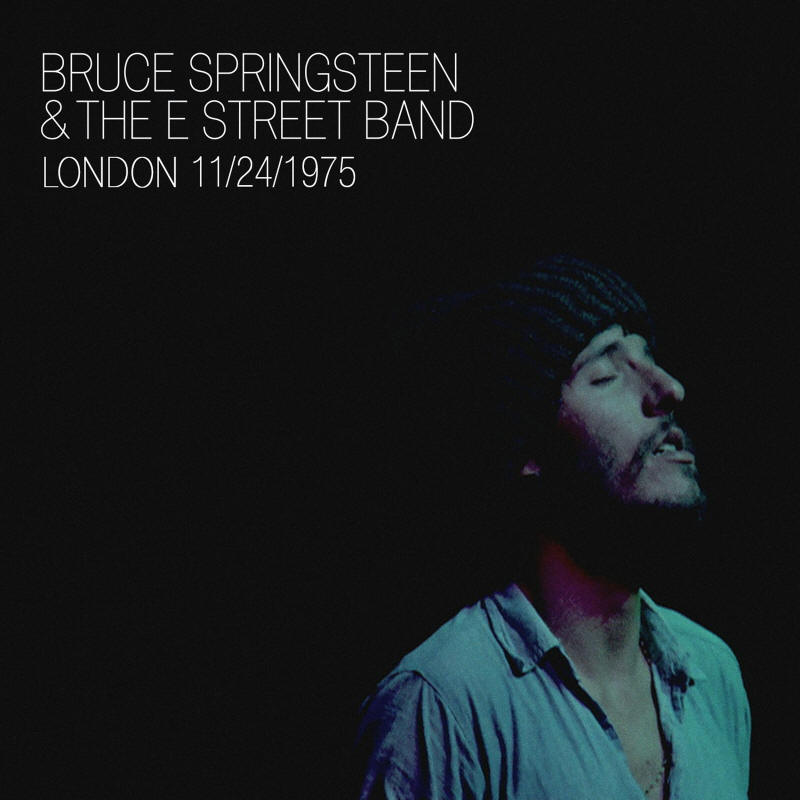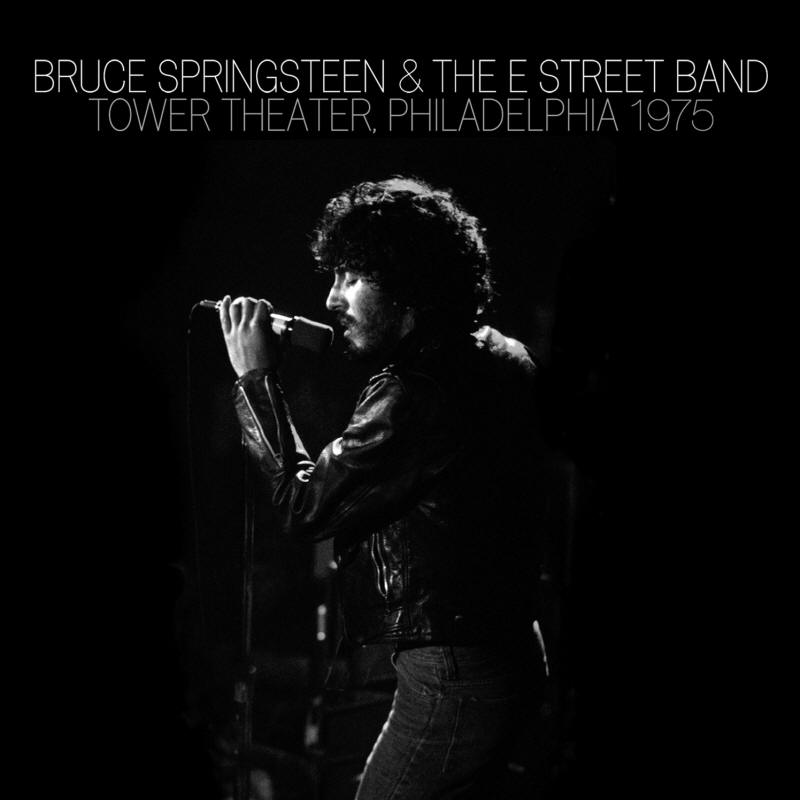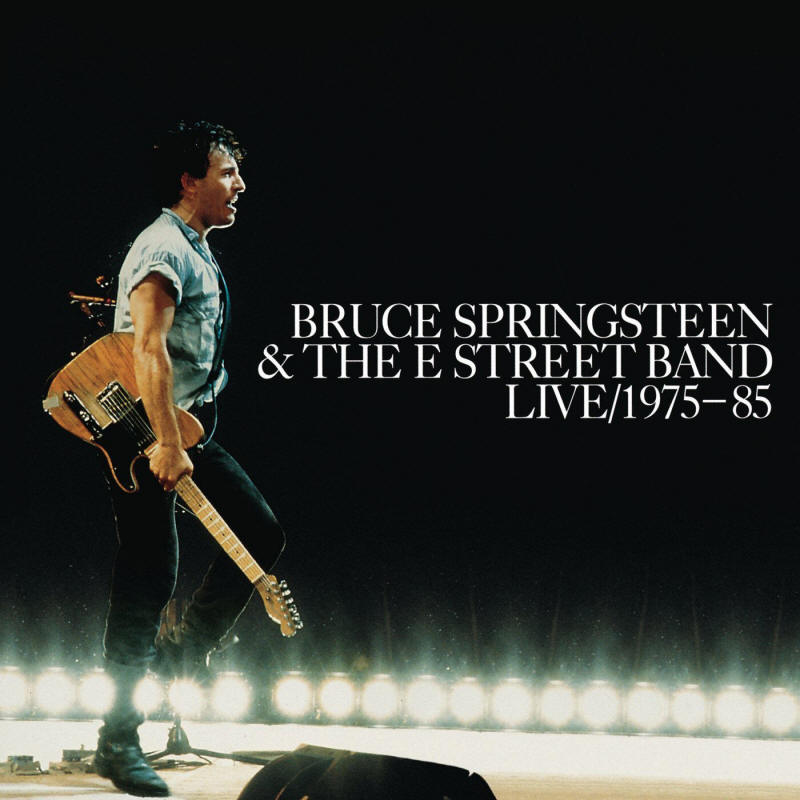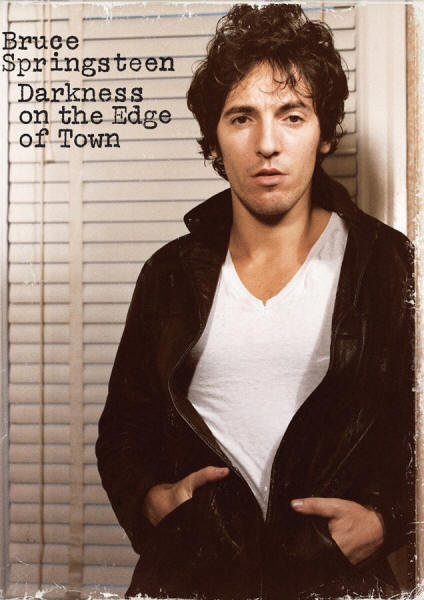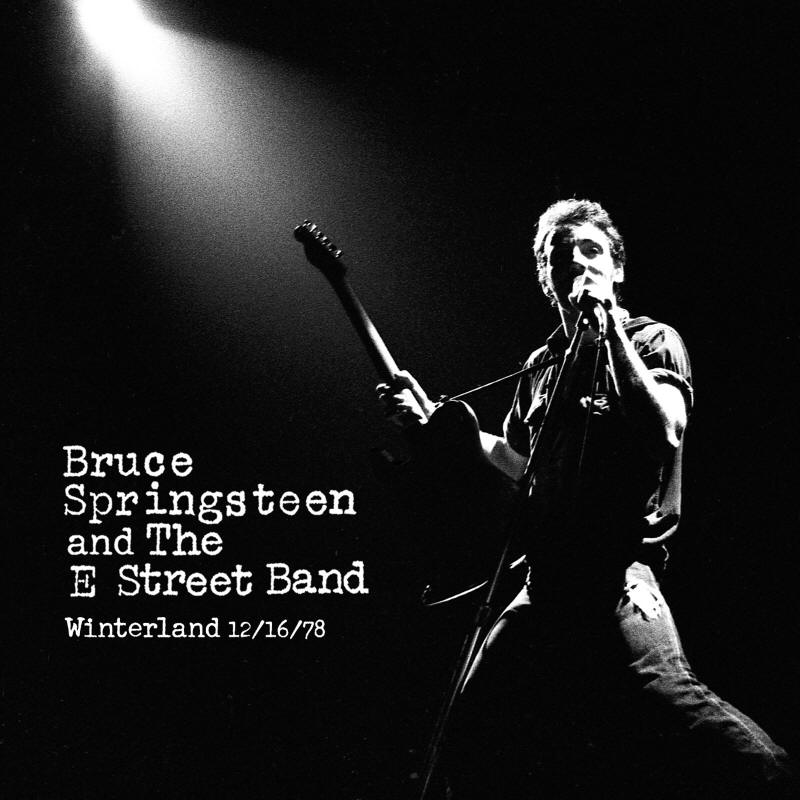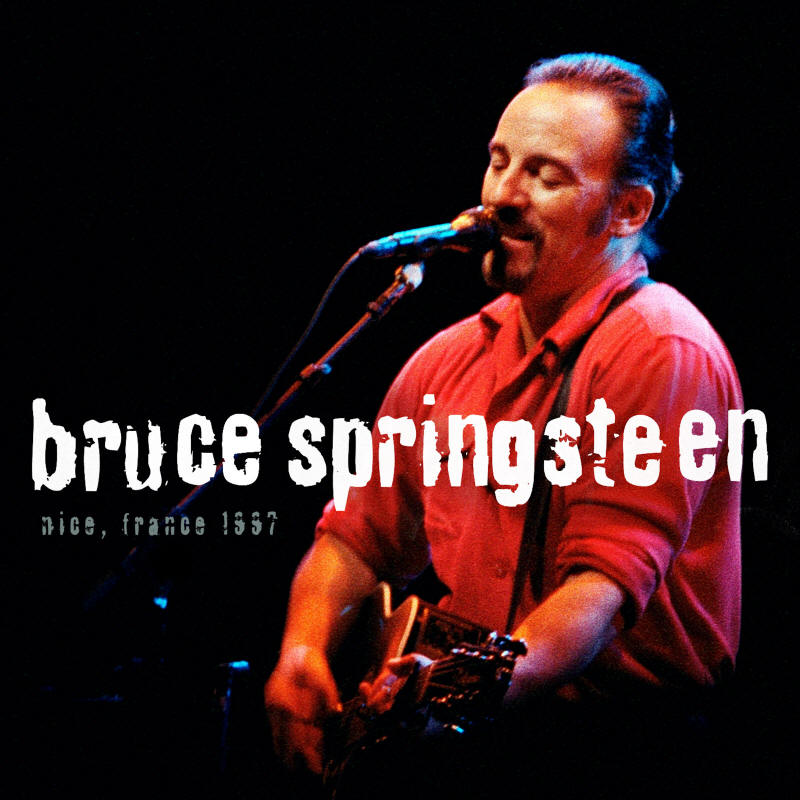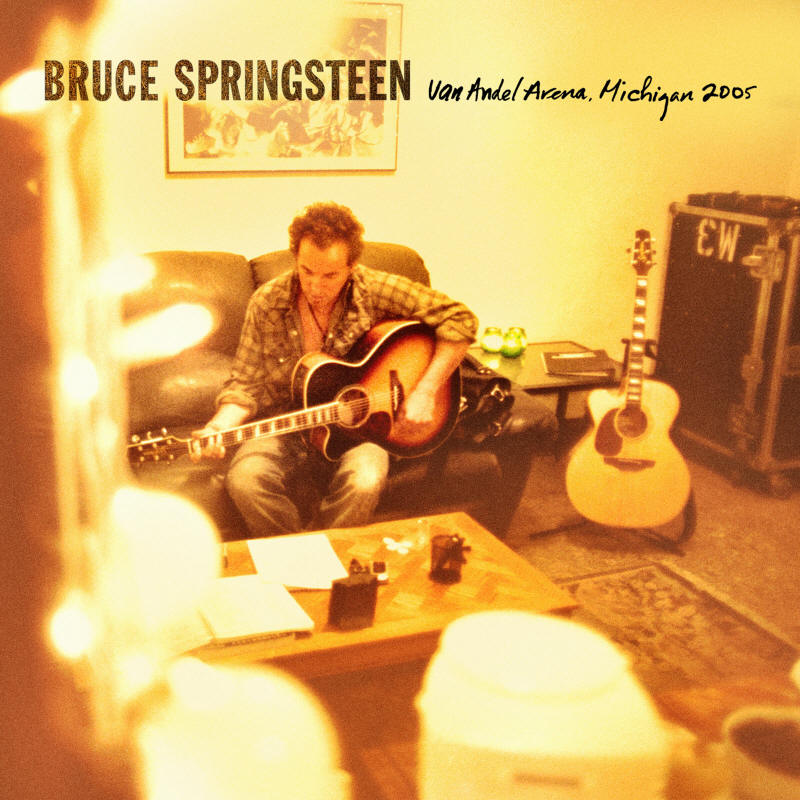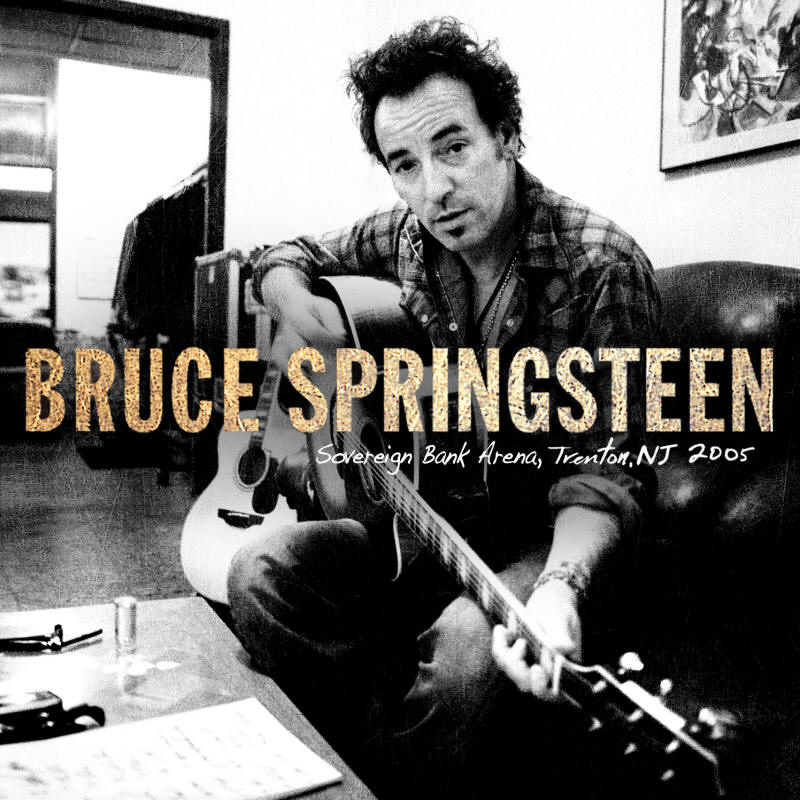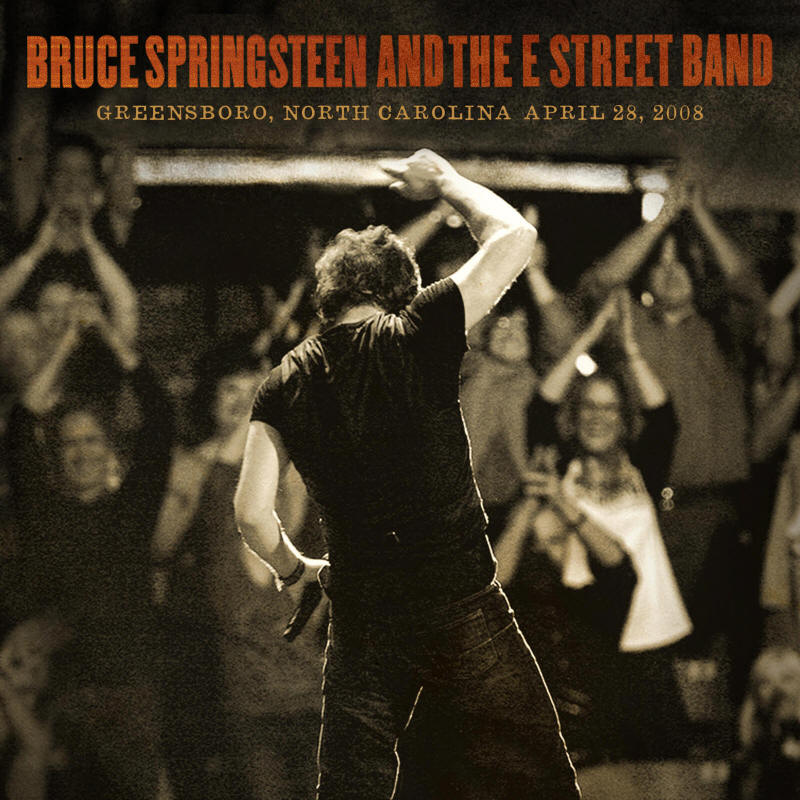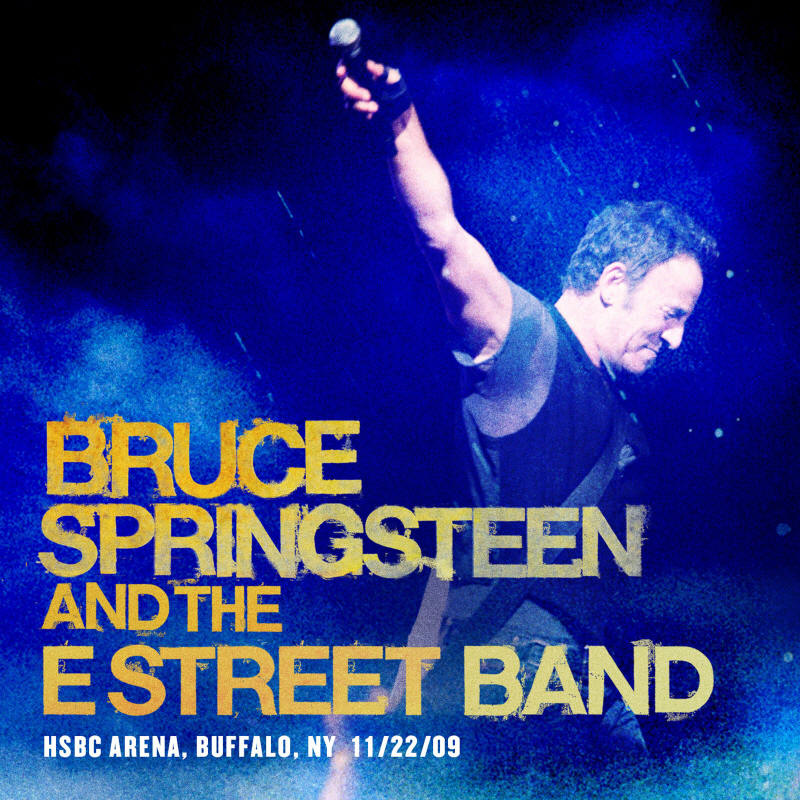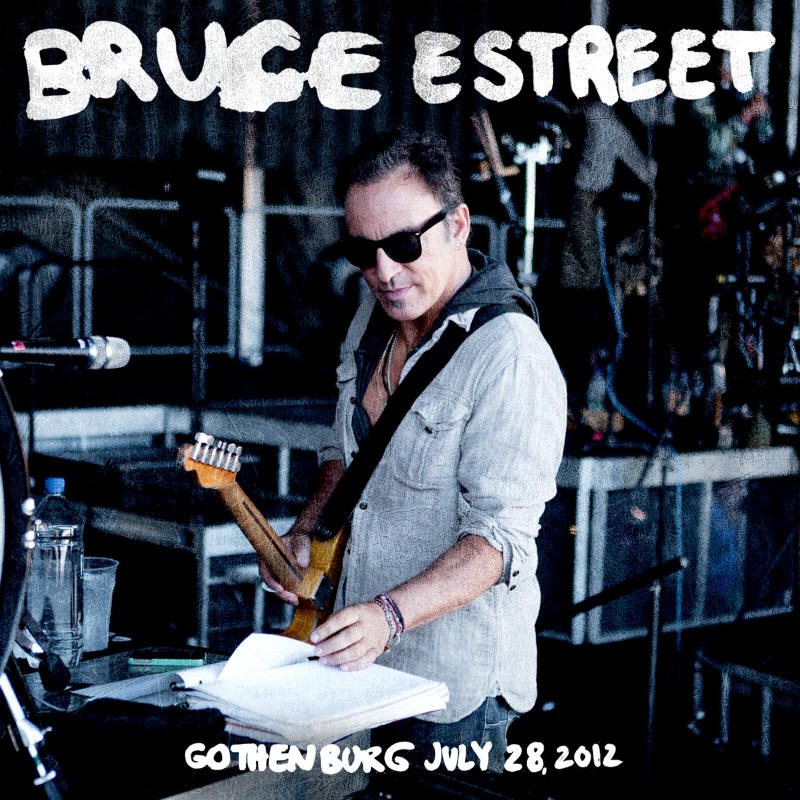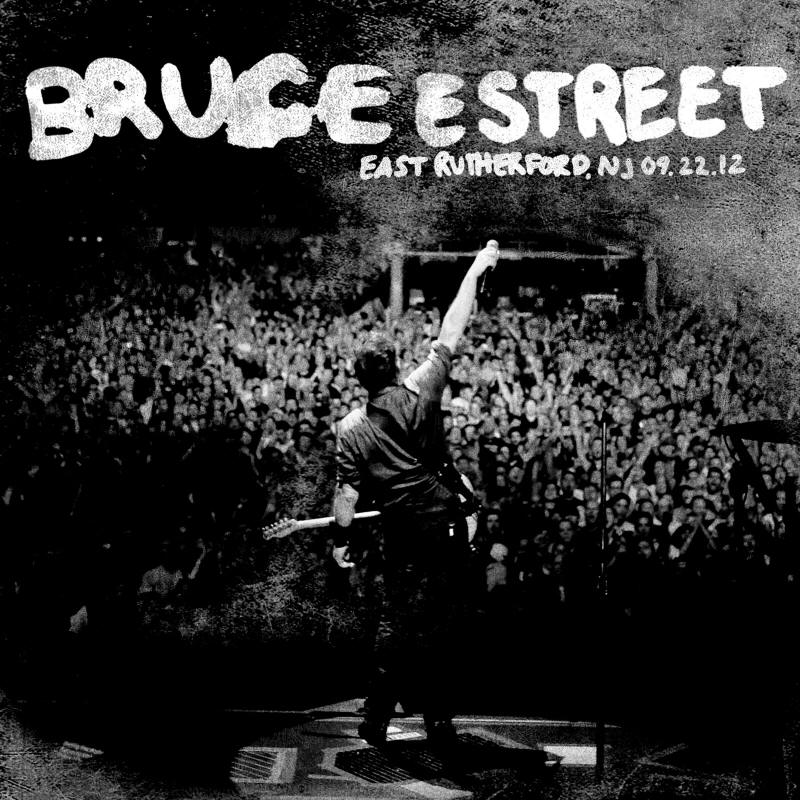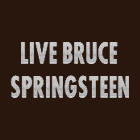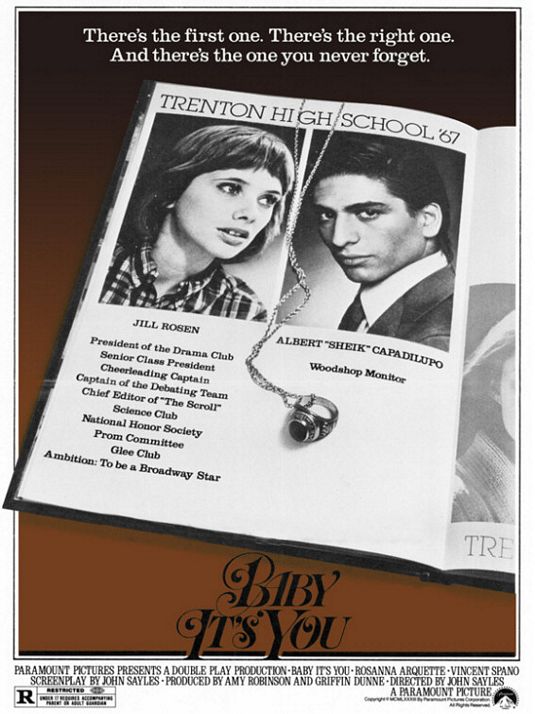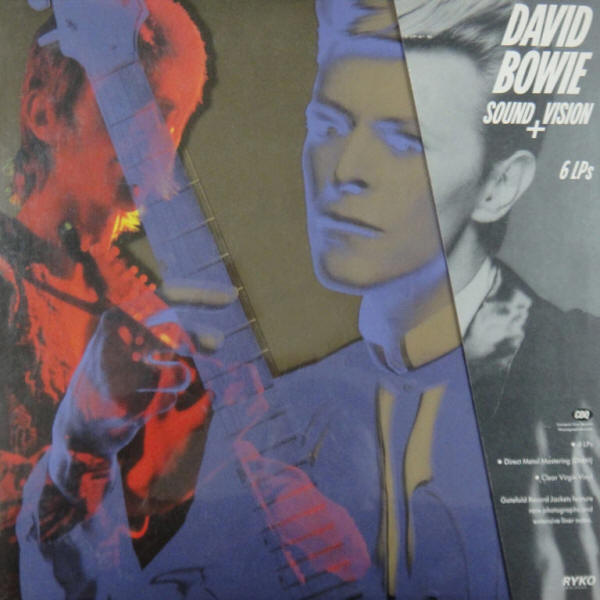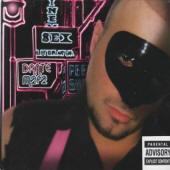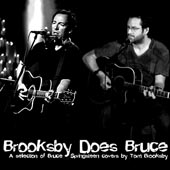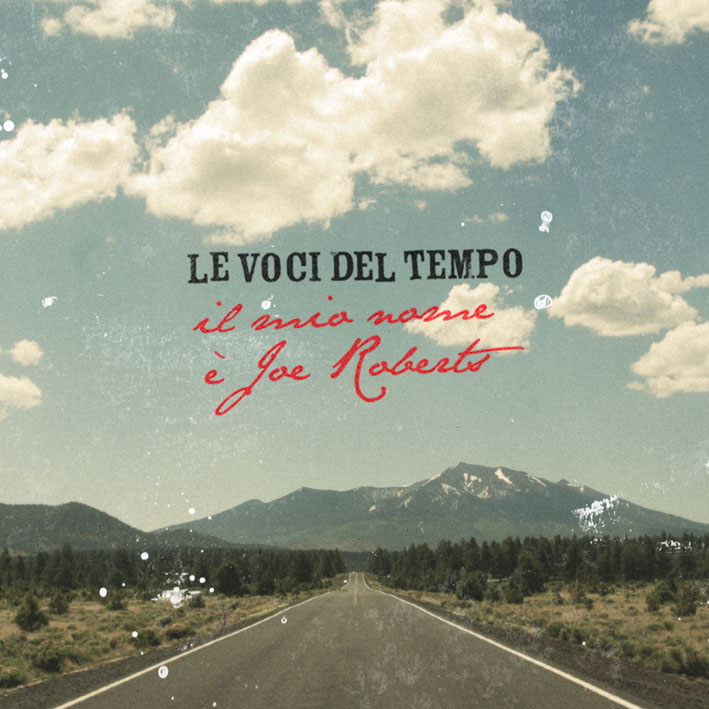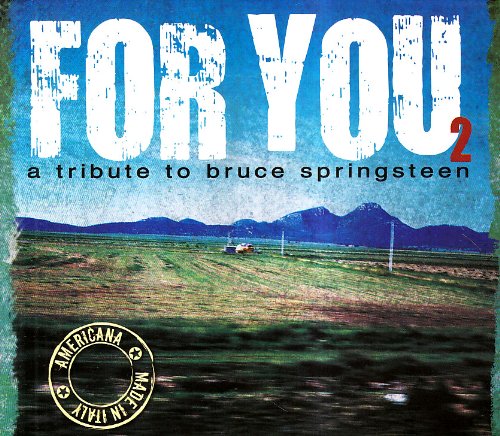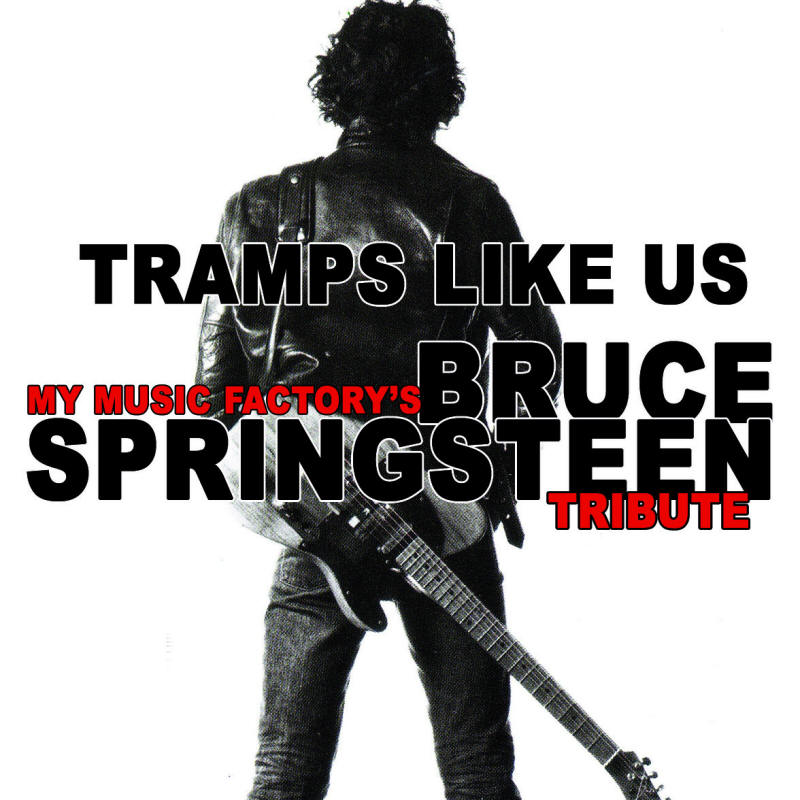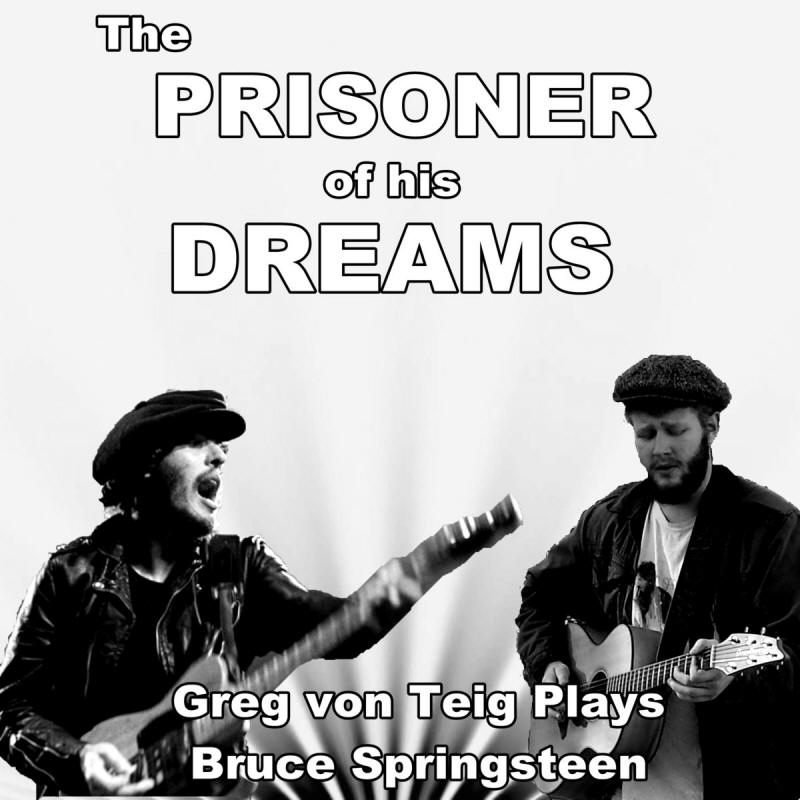IT'S HARD TO BE A SAINT IN THE CITY 
Album version
I had skin like leather and the diamond-hard look of a cobra
I was born blue and weathered but I burst just like a supernova
I could walk like Brando right into the sun
Dance just like a Casanova
With my blackjack and jacket and hair slicked sweet
Silver star studs on my duds like a Harley in heat
When I strut down the street I could feel its heartbeat
The sisters fell back, said, "Don't that man look pretty"
The cripple on the corner cried out, "Nickels for your pity"
Them gasoline boys downtown sure talk gritty
It's so hard to be a saint in the city
I was the king of the alley, mama, I could talk some trash
I was the prince of the paupers crowned downtown at the beggar's bash
I was the pimp's main prophet, I kept everything cool
Just a backstreet gambler with the luck to lose
And when the heat came down and it was left on the ground
Devil appeared like Jesus through the steam in the street
Showin' me a hand I knew even the cops couldn't beat
I felt his hot breath on my neck as I dove into the heat
It's so hard to be a saint when you're just a boy out on the street
And the sages of the subway sit just like the living dead
As the tracks clack out the rhythm, their eyes fixed straight ahead
They ride the line of balance and hold on by just a thread
But it's too hot in these tunnels, you can get hit up by the heat
You get up to get out at your next stop but they push you back down in your seat
Your heart starts beatin' faster as you struggle to your feet
And you're out of that hole, back up on the street
And them south side sisters sure look pretty
The cripple on the corner cries out, "Nickels for your pity"
Them downtown boys, they sure talk gritty
It's so hard to be a saint in the city
So hard
Whoa, yeah, oh
Walking down some side street
With your back flat jacked up against some wall
Info
IT'S HARD TO BE A SAINT IN THE CITY is a song written by Bruce Springsteen and released on his 1973 album Greetings From Asbury Park, N.J. The above lyrics are for Bruce Springsteen's album version of IT'S HARD TO BE A SAINT IN THE CITY as released in 1973.
Writing and Recording
There is no indication to when IT'S HARD TO BE A SAINT IN THE CITY was written. The song was recorded during the Greetings From Asbury Park, N.J. album recording sessions at 914 Sound Studios in Blauvelt, NY. The track, as well as the whole album, was produced by Mike Appel and Jimmy Cretecos. According to Sony's logs of Bruce Springsteen's studio sessions, the song was cut on 26 Jun 1972, 27 Jun 1972, and 26 Oct 1972. Bruce Springsteen recorded solo on 26 Jun 1972, but he brought in Vini Lopez, David Sancious, and Garry Tallent the following day. It is not clear in which arrangement the song was recorded on 26 Oct 1972. Springsteen plays guitar and sings vocals on the officially released album version of the song, and is backed by Vini Lopez on drums, David Sancious on piano, and Garry Tallent on electric bass. This means that the album version of DOES THIS BUS STOP AT 82ND STREET? was probably recorded on 27 Jun 1972, or possibly on 26 Oct 1972 if Springsteen recorded with the band on that day. The original recording of IT'S HARD TO BE A SAINT IN THE CITY was longer but was faded out a few seconds earlier when mixed for the album release. See the unedited studio version for more details.
Another studio version of the song is in circulation among collectors. It's a studio take likely recorded around May-Jun 1972 at Pocketful Of Tunes Studios in New York City, NY. It features Springsteen solo on vocals and acoustic guitar. The May-Jun 1972 sessions at Pocketful Of Tunes Studios were produced by Mike Appel and Jim Cretecos, and Cretecos took the role of recording engineer. See the unofficial studio version for more details.
Bruce Springsteen performed IT'S HARD TO BE A SAINT IN THE CITY during an audition for Mike Appel and Jim Cretecos on 14 Feb 1972 at Appel's office at Pocketful Of Tunes. Bob Spitz was also present and he recorded the performance on a reel-to-reel tape recorder. The song was performed a second time at the request of Appel who reportedly was dazzled the lyrics. A solo demo of IT'S HARD TO BE A SAINT IN THE CITY was performed during an informal audition for CBS Records on 02 May 1972. Another solo demo of IT'S HARD TO BE A SAINT IN THE CITY was performed and recorded during Springsteen's first formal studio audition for CBS Records on 03 May 1972. It feature Springsteen solo on vocals and acoustic guitar. See the 03 May 1972 demo version and the "1971-1972 Auditions" section below for more details. This demo take was released on the Tracks box set in 1998.
Bruce Springsteen was in favour of including VISITATION AT FORT HORN on Greetings From Asbury Park, N.J. instead of IT'S HARD TO BE A SAINT IN THE CITY, but Mike Appel thought it was too folky an pushed for IT'S HARD TO BE A SAINT IN THE CITY instead. "'Saint in the City' was so great," he told Charles R. Cross in a 1990 interview published in issue #34/35 (Fall 1990/Winter 1991) of Backstreets magazine. "I had to convince him of that one. I had to throw a fit to get him to go with that."
IT'S HARD TO BE A SAINT IN THE CITY (written as "Saint In The City") appears on a Springsteen handwritten song list that was put up for auction in December 2013 on GottaHaveRockAndRoll.com. This is most probably a list of songs that Springsteen was considering taking into the studio at the very early stages of the Greetings From Asbury Park, N.J. recording sessions (July 1972).
1972 handwritten song list
1971-1972 Auditions
On 04 Nov 1971, Carl "Tinker" West, then-manager of The Bruce Springsteen Band, drove Bruce Springsteen to New York City to introduce him to Mike Appel, a songwriter who carried on his songwriting activities jointly with Jim Cretecos. Appel was then employed at Pocketful Of Tunes Inc., Wes Farrell's publishing company in New York City, NY, and the meeting took place at Pocketful Of Tunes. Springsteen performed two or three songs, some on piano and some on acoustic guitar. Only Appel and West were present at this first meeting. Appel has stated in interview that he was not particularly impressed by what he heard at this initial audition but did see raw creativity in the lyrics of BABY DOLL. That performance was not recorded and the titles of the other song(s) performed remain unclear. Appel indicated an interest in promoting them in some way and the meeting ended with an agreement to keep in touch but no commitments from either party.
Meanwhile Springsteen continued gigging with The Bruce Springsteen Band in New Jersey and Virginia and visited his family in California for a few weeks around the holidays. The next meeting between Springsteen and Appel took place on 14 Feb 1972. Springsteen performed a set of seven songs at Appel's office at Pocketful Of Tunes. The songs were performed live solo on acoustic guitar to an audience of three: Mike Appel, Jim Cretecos, and Bob Spitz. Spitz recorded the performance on a reel-to-reel tape recorder. IT'S HARD TO BE A SAINT IN THE CITY was performed a second time at the request of Appel who reportedly was dazzled the lyrics. After that performance Appel and Cretecos began putting the wheels in motion to sign Springsteen to a comprehensive range of contracts.
- NO NEED
- COWBOYS OF THE SEA
- IF I WAS THE PRIEST
- IT'S HARD TO BE A SAINT IN THE CITY [take #1, fast version]
- IT'S HARD TO BE A SAINT IN THE CITY [take #2, slow version]
- THE ANGEL
- HOLLYWOOD KIDS
- ARABIAN NIGHTS
- FOR YOU
In March 1972, it was agreed that Appel and Cretecos would promote Springsteen's interests. For that purpose, Appel and Cretecos formed three partnerships owned equally by the two: Laurel Canyon Management to act as Springsteen's manager, Laurel Canyon Productions to cover his recording activities, and Sioux City Music Inc to cover his songwriting activities. In the meantime, Springsteen entered into an "Exclusive Management Contract" with Laurel Canyon Management and an "Exclusive Recording Contract" with Laurel Canyon Productions, but did not sign any songwriting agreement at this time, apparently wishing to think this matter over a bit longer. The two contracts were signed at Appel's office.
Appel wanted to sign Springsteen to Columbia Records. He could not arrange a meeting with label head Clive Davis but was able to arrange one with CBS A&R Manager and talent scout John Hammond. An informal private audition took place around 10:30 AM on 02 May 1972 in Hammond's office in the A&R Department at Columbia Records in New York City. John Hammond and Mike Appel were the only two present at the audition. All songs were performed on acoustic guitar and the performance, which lasted about 30 to 40 minutes, was not recorded but based on the collective recollections of the attendees at least the following four songs were played:
- GROWIN' UP
- IT'S HARD TO BE A SAINT IN THE CITY
- MARY QUEEN OF ARKANSAS
- IF I WAS THE PRIEST
In a 1980 interview, Hammond mentioned he wasn't all that enamored with MARY QUEEN OF ARKANSAS, but that he loved all the other songs that Springsteen performed that morning. "It was a big, big day for me," Springsteen told Mark Hagen in an interview for Mojo magazine published in January 1999. "I was twenty-two and came up on the bus with an acoustic guitar with no case which I'd borrowed from the drummer from The Castiles. I was embarrassed carrying it around the city. I walked into [John Hammond's] office and had the audition and I played a couple of songs and he said, 'You've got to be on Columbia Records. But I need to see you play. And I need to hear how you sound on tape.'"
Springsteen said that he and Mike Appel "walked all around the Village trying to find some place that would let somebody just get up on stage and play. We went to the Bitter End, it didn't work out. We went to another club. And finally we went to the old Gaslight on MacDougal Street and the guy says, 'Yeah, we have an open night where you can come down and play for half an hour'. There were about 10 people in the place and I played for about half an hour." The performance took place at the Gaslight Au Go Go club in New York City. No recording has emanated from this club appearance which lasted about 30 minutes and included just 4 or 5 songs. Both Springsteen and Appel have mentioned these two tracks as having been played:
- GROWIN' UP
- IT'S HARD TO BE A SAINT IN THE CITY
John Hammond was impressed. "The kid absolutely knocked me out," he told Newsweek in 1975. "I only hear somebody really good once every ten years, and not only was Bruce the best, he was a lot better than Dylan when I first heard him." As Springsteen recalled, Hammond said, "Gee, that was great. I want you to come to the Columbia Recording Studio and make a demo tape". He invited Springsteen back to CBS to make a studio demo audition tape the following day. Springsteen said, "A demo I made at Bill Graham's studio in San Francisco in '69 was the only other time I'd ever been in a real recording studio. Columbia was very old-fashioned: everybody in ties and shirts; the engineer was in a white shirt and a tie and was probably 50, 55 years old, it was just him and John and Mike Appel there, and he just hits the button and gives you your serial number, and off you go. I was excited. I felt I'd written some good songs and this was my shot. I had nothing to lose and it was like the beginning of something."
Springsteen's first "formal" studio audition for CBS took place on 03 May 1972 at CBS Studios in New York City. The session consisted of 12 songs. Click on any of the below links for more details.
Four of the tracks recorded during that demo session would be officially released in 1998 on the Tracks box set. John Hammond's introduction of the audition was kept intact at the start of MARY QUEEN OF ARKANSAS which opens the box set. Hammond was prepared to sign Bruce on the spot but administrative formalities within CBS meant that it would take several weeks for that to become reality. According to Clinton Heylin's 2012 book E Street Shuffle: The Glory Days of Bruce Springsteen & the E Street Band, Hammond send Clive Davis a dub of the audition and a memo saying: "Here is a copy of a couple of the reels of Bruce Springsteen, a very talented kid who recorded these twelve songs in a period of around two hours last Wednesday... I think we better act quickly because many people heard the boy at The Gaslight so that his fame is beginning to spread." Davis responded the next day, "I love Bruce Springsteen! He's an original in every respect. I'd like to meet him if you can arrange it."
Springsteen told Mark Hagen, "I knew a lot about John Hammond, the work he'd done, the people he'd discovered, his importance in music and it was very exciting to feel you were worth his time. No matter what happened afterwards, even it was just for this one night, you were worth his time. That meant a lot to me. He was very encouraging – simply being in that room with him at the board was one of my greatest recording experiences."
According to Heylin, Hammond thought that Springsteen might be better off on the Epic subsidiary, but Mike Appel intercepted: "[Hammond] decided that Bruce should be with the younger people at Epic and not with the stodgier, older people at Columbia – and he got this in his head. I always felt that Columbia was the classiest label on the planet. I just always saw [Bruce's] record going round on that red label, just like Dylan's did."
About a week following the audition, Springsteen entered into an "Exclusive Songwriting Contract" with Sioux City Music Inc and a new/revised "Exclusive Management Contract" with Laurel Canyon Management. The two contracts were signed at the office of New York attorney Jules Kurz, a sole practitioner specializing in music and entertainment law who was then handling Appel and Cretecos' business affairs. This new management agreement replaced the one from March and made changes in remuneration and compensation rates between the parties; it was a better deal for Springsteen than the previous one.
Following the signing of the agreements, Springsteen began a series of demo sessions for Sioux City Music Inc in May and June 1972. The session took place at two locations in New York City: Wes Farrell's Pocketful Of Sounds Studios where Appel was then still employed, and the apartment of Jim Cretecos. There were multiple sessions held at each location and the session dates at the two locations may have actually intertwined. Cretecos' apartment was utilized due to the limited availability of the studio at Pocketful Of Sounds. Cretecos was an electronics engineer and was able to emulate a reasonable recording environment in his apartment, so much so that it is difficult to distinguish some of the recordings Bruce made in Cretecos' apartment from those made in a professional studio.
On 09 Jun 1972 Laurel Canyon Productions (describing itself as Laurel Canyon Productions Inc) entered into a recording agreement with CBS Records. This meant that Springsteen was not signed directly to CBS, but his services were subcontracted to CBS by Laurel Canyon. Under the recording agreement, all individual recordings made by Springsteen under the CBS agreement remained the property of Laurel Canyon Productions until such point that they were assigned and transferred to CBS. This contract was signed by CBS at CBS Records offices and by Mike Appel at Laurel Canyon Productions offices. Bruce Springsteen signed it too, on the hood of a car in a dimly lit bar parking lot in New York City. Appel had him sign it as a matter of courtesy and as a matter of endorsement – from a legal standpoint it was not necessary that Springsteen signs this agreement as the "Exclusive Recording Agreement" between him and Laurel Canyon Productions did not grant him the right to block or refuse this contract between Laurel Canyon Productions and CBS. The contract was varied in August 1972 to also cover the master tapes of certain songs which had been recorded prior to the date of the agreement.
Mike Appel and Jimmy Cretecos later decided to change their business structure and model. They wanted to cease the partnership model and incorporate their businesses with the two having a 50/50 split in shares of the new incorporated business entities. These matters did not involve Springsteen – his signature or permission was not required. Laurel Canyon Productions (the sound recordings partnership) became Laurel Canyon Limited (incorporated) on 28 Jun 1972, Sioux City Music Inc (the songwriting partnership) became Sioux City Music Limited (incorporated) on 05 Oct 1972, and Laurel Canyon Management (the management partnership) became Laurel Canyon Management Limited (incorporated) on 05 Mar 1973. The three new companies were incorporated in New York and Appel and Cretecos were appointed the first directors. Appel and Cretecos wanted to change the name of Sioux City to Laurel Canyon in order to have name consistency among their family of companies, so on 24 Apr 1973 Sioux City Music Limited changed its name to Laurel Canyon Music Limited. In January 1974 Jimmy Cretecos sold his 50% shareholding in each of the Laurel Canyon companies to Mike Appel, thus Appel becoming the sole owner of the companies.
Greetings From Asbury Park, N.J.
After signing the contract with CBS Records, Laurel Canyon Productions was to receive an immediate cash advance from CBS and this money was to be used to pay for the studio time to record Springsteen' debut album. A delay by CBS in delivering the advance money to Laurel Canyon Productions resulted in delaying the sessions till early July 1972. During June Springsteen had finalized the selection of the musicians that would be used for the initial sessions. The musicians chosen, with an ok from Appel and Cretecos, constituted the entire line-up of the former Bruce Springsteen Band: David Sancious on keyboards, Garry Tallent on bass, Vini Lopez on drums, and Steve Van Zandt on quitar. Van Zandt ended up partaking in almost none of the 914 Sound Studios band sessions because of a prior commitment to tour as a member of The Dovells backing group.
The recording sessions for Greetings From Asbury Park, N.J. spanned a period of five months, from early June to late October 1972 (the majority were in June), and they all took place at 914 Sound Studios in Blauvelt, NY. The core "band" sessions were completed in only about two weeks. No unreleased band recordings from the debut album sessions have surfaced. Following these band sessions the various band members scattered. It should be noted that Springsteen had not decided to form a touring band at this stage.
Springsteen spent the next few weeks recording solo material. It was during this period that differences of opinion surfaced about what material was going to dominate the eventually released album. There were two sides in this disagreement: Mike Appel and John Hammond wanted a solo-dominated LP while Jim Cretecos was in favor of a band-dominated one. Springsteen was undecided at first, but soon sided with Cretecos. Appel later said that he was so impressed by Bruce's lyrics and told him, "Who needs a band when you can write lyrics like that?" In early August a compromise was reached and the album track selection was decided upon, featuring five band recordings (DOES THIS BUS STOP AT 82ND STREET?, GROWIN' UP, IT'S HARD TO BE A SAINT IN THE CITY, FOR YOU, and LOST IN THE FLOOD) and five solo recordings (THE ANGEL, MARY QUEEN OF ARKANSAS, JAZZ MUSICIAN, ARABIAN NIGHTS, and VISITATION AT FORT HORN). On 10 Aug 1972 Laurel Canyon transferred the sound recording copyrights to these ten songs to CBS. It seemed the album was finalized, but when then CBS president Clive Davis listened to the tracks he commented that not only did he prefer the band tracks, but he also felt the album lacked a potential hit single. In essence Davis was siding with Springsteen's vision of the album as being more rock-orientated.
In August 1972 Springsteen composed two more commercial-sounding songs, BLINDED BY THE LIGHT and SPIRIT IN THE NIGHT. Consequently a further "band" session was required. However both Sancious and Tallent, then-employed at Alpha Sound Studios in Richmond, NJ, were unable to return to New York to record. Bruce wished to incorporate saxophone in both new songs and contacted Clarence Clemons, a then-member of Norman Seldin & The Joyful Noyze. So the studio session line-up for these two songs was Clemons, Lopez, and Springsteen who played all other instruments, except for the piano on BLINDED BY THE LIGHT which was handled by Harold Wheeler. BLINDED BY THE LIGHT and SPIRIT IN THE NIGHT were completed by early September. These two band recordings bumped three solo recordings: JAZZ MUSICIAN, ARABIAN NIGHTS, and VISITATION AT FORT HORN. Therefore the final album was reduced from 10 tracks to 9, encompassing 7 band tracks and 2 solo tracks. Columbia Records' original intention was to release the album in late November 1972, but decided the album might get overlooked among the massive amount of pre-Christmas releases so the LP was held back for until early January.
Greetings From Asbury Park, N.J. was released on Columbia Records on 05 Jan 1973. It was produced by Mike Appel and Jim Cretecos. The album received mixed but mostly positive reviews and some critics found it under-produced, as Appel and Cretecos tried to spend as little as possible from Columbia's $65,000 advance and recording budget. The album sold 25,000 copies only in its first year of release and did not chart until the summer of 1975 when the hype over the BORN TO RUN single attracted buyers to Springsteen's earlier albums.
Bruce Springsteen -- Greetings From Asbury Park, N.J.
The album features 9 new Springsteen compositions and clocks at 37:08.
Other Official Releases
IT'S HARD TO BE A SAINT IN THE CITY can also be found on three Bruce Springsteen promo-only samplers.
Bruce Springsteen -- Last American Hero From Asbury Park, N.J.
LP - CBS/Sony (YAPC 95) - Japan, 1978
Japan-only promotional LP sampler issued to promote Springsteen's fourth album,
Darkness On The Edge Of Town, though strangely including tracks from his first three albums only. This is one of the rarest Springsteen records ever.
Bruce Springsteen -- Storia E Musica Rock: Bruce Springsteen
MC - CBS (ROCK 05) - Italy, 1982
Italy-only cassette tape sampler issued exclusively with domestic magazine
Storia E Musica Rock and compiling 7 tracks from Springsteen's first four albums.
Bruce Springsteen -- Interview With Bruce Springsteen
2xCD - Columbia (SAMPCD 3184 9) - Germany, 1996
Germany-only promotional 2-CD set featuring 16 Springsteen tracks interspersed with segments from an exclusive interview for German radio station "Radio Eins" conducted in Los Angeles in February 1996.
Other versions of IT'S HARD TO BE A SAINT IN THE CITY were also officially released.
The
live 18 Nov 1975 version of IT'S HARD TO BE A SAINT IN THE CITY was released on the
Hammersmith Odeon, London '75 album and home video in 2005.
The live 24 Nov 1975 version of IT'S HARD TO BE A SAINT IN THE CITY was released on the London 11/24/1975 official live download in 2020.
The live 31 Dec 1975 version of IT'S HARD TO BE A SAINT IN THE CITY was released on the Tower Theater, Philadelphia 1975 official live download in 2015.
The
live 08 Dec 1978 version of IT'S HARD TO BE A SAINT IN THE CITY was released on
The Promise: The Darkness On The Edge Of Town Story box set in 2010.
The live 16 Dec 1978 version of IT'S HARD TO BE A SAINT IN THE CITY was released on the Winterland 12/16/78 official live download in 2019.
The live 18 May 1997 version of IT'S HARD TO BE A SAINT IN THE CITY was released on the Nice, France 1997 official live download in 2021.
The
live 03 Aug 2005 version of IT'S HARD TO BE A SAINT IN THE CITY was released on the
Van Andel Arena, Michigan 2005 official live download in 2018.
The live 28 Apr 2008 version of IT'S HARD TO BE A SAINT IN THE CITY was released on the Greensboro, North Carolina April 28, 2008 official live download in 2020.
The
live 22 Nov 2009 version of IT'S HARD TO BE A SAINT IN THE CITY was released on the
HSBC Arena, Buffalo, NY 11/22/2009 official live download in 2016.
The live 28 Jul 2012 version of IT'S HARD TO BE A SAINT IN THE CITY was released on the Gothenburg July 28, 2012 official live download in 2020.
The live 22 Sep 2012 version of IT'S HARD TO BE A SAINT IN THE CITY was released on the East Rutherford, NJ 09.22.12 official live download in 2019.
Audio recordings for all
The River Tour 2016 shows were officially released on
live.brucespringsteen.net. These include 11 versions of IT'S HARD TO BE A SAINT IN THE CITY.
- 25 Feb 2016 at First Niagara Center, Buffalo, NY
- 27 May 2016 at Croke Park, Dublin, Ireland
- 29 May 2016 at Croke Park, Dublin, Ireland
- 19 Jun 2016 at Olympiastadion, Berlin, Germany
- 30 Aug 2016 at Metlife Stadium, East Rutherford, NJ
- 01 Sep 2016 at Nationals Park, Washington, DC
- 05 Sep 2016 at Veterans United Home Loans Amphitheater, Virginia Beach, VA
- 07 Sep 2016 at Citizens Bank Park, Philadelphia, PA
- 09 Sep 2016 at Citizens Bank Park, Philadelphia, PA
- 11 Sep 2016 at Consol Energy Center, Pittsburgh, PA
- 14 Sep 2016 at Gillette Stadium, Foxborough, MA
Live History: on-tour
IT'S HARD TO BE A SAINT IN THE CITY is known to have been performed at least once in Bruce Springsteen's early years (pre-October 1972), on 02 May 1972 at the Gaslight Au Go Go club in New York City (read the "1971-1972 Auditions" section above for more details). Very little is known about shows from this early period, and therefore, the song may have been played on some more dates.
IT'S HARD TO BE A SAINT IN THE CITY is known to have been performed at least 3 times during what is considered the Greetings From Asbury Park, N.J. Tour (October 1972 to September 1973). Many of that period's setlists are incomplete or unknown, and therefore, the song must have been played on some more dates during the Greetings From Asbury Park, N.J. Tour. On this tour, the song was played in a full-band album-style arrangement.
IT'S HARD TO BE A SAINT IN THE CITY is known to have been performed at least 39 times during what is considered The Wild, The Innocent, & The E Street Shuffle Tour (September 1973 to March 1975). Some of that period's setlists are incomplete or unknown, and therefore, the song must have been played on some more dates during The Wild, The Innocent, & The E Street Shuffle Tour. On this tour, the song was played in a full-band arrangement that evolved from the Greetings From Asbury Park, N.J. Tour, album-style version at the beginning of the tour to the traditional full-band version, with a guitar finale at the end, by the end of the tour. The version from 23 Nov 1974 in Salem, MA, is unique in that it features an outro rap. See the live 23 Nov 1974 version for more details. A "police siren" sound effect prop was used at the end of the song during some shows in November 1974.
IT'S HARD TO BE A SAINT IN THE CITY is known to have been performed at least 54 times during the Born To Run Tour (73 know dates / 81 known shows, July to December 1975). Some of that period's setlists are incomplete or unknown, and therefore, the song must have been played on some more dates during the Born To Run Tour. On this tour, the song was played in its traditional full-band arrangement. While the guitar ending of the song had been developed by the end of The Wild, The Innocent, & The E Street Shuffle Tour, it was on the Born To Run Tour (with Steven Van Zandt having newly joined the band) that the Bruce/Steve guitar dueling outro, which is played during this song to this day, was developed. The live 18 Nov 1975 version of IT'S HARD TO BE A SAINT IN THE CITY was released on the Hammersmith Odeon, London '75 album and home video in 2005. The live 24 Nov 1975 version of IT'S HARD TO BE A SAINT IN THE CITY was released on the London 11/24/1975 official live download in 2020. The live 31 Dec 1975 version of IT'S HARD TO BE A SAINT IN THE CITY was released on the Tower Theater, Philadelphia 1975 official live download in 2015.
IT'S HARD TO BE A SAINT IN THE CITY is known to have been performed at least 19 times during the so-called Chicken Scratch Tour (35 know dates, March to May 1976). Some of that period's setlists are incomplete or unknown, and therefore, the song must have been played on some more dates during the Chicken Scratch Tour; it may have been a stable number during the tour. On this tour, the song was played in its traditional full-band arrangement.
IT'S HARD TO BE A SAINT IN THE CITY is known to have been performed at least twice during what is known as The Lawsuit Tour (62 know dates, August 1976 to March 1977); these were the last two of the tour's dates. Some of that period's setlists are incomplete or unknown, and therefore, the song may have been played on some more dates during the Lawsuit Tour. On this tour, the song was played in its traditional full-band arrangement.
IT'S HARD TO BE A SAINT IN THE CITY is known to have been performed at least 20 times during the Darkness On The Edge Of Town Tour (111 dates, May 1978 to January 1979). A few setlists from that period are incomplete or unknown, and therefore, the song may have been played on some more dates during the Darkness On The Edge Of Town Tour. On this tour, the song was played in a its traditional full-band arrangement. The live 07 Jul 1978 version of IT'S HARD TO BE A SAINT IN THE CITY was released on the Live/1975-85 box set in 1986. The live 08 Dec 1978 version of IT'S HARD TO BE A SAINT IN THE CITY was released on The Promise: The Darkness On The Edge Of Town Story box set in 2010. The live 16 Dec 1978 version of IT'S HARD TO BE A SAINT IN THE CITY was released on the Winterland 12/16/78 official live download in 2019.
IT'S HARD TO BE A SAINT IN THE CITY is known to have been performed at least twice during The River Tour (138 dates, October 1980 to September 1981), both at the very end of the tour. A few setlists from that period are incomplete, and therefore, the song may have been played on some more dates during The River Tour, but that's very unlikely. On this tour, the song was played in a in its traditional full-band arrangement.
IT'S HARD TO BE A SAINT IN THE CITY was performed 7 times during The Ghost Of Tom Joad Solo Acoustic Tour (128 dates, November 1995 to May 1997), all in November 1996 in New Jersey and May 1997 in Europe. On this tour, the song was played in a solo acoustic guitar arrangement. The live 18 May 1997 version of IT'S HARD TO BE A SAINT IN THE CITY was released on the Nice, France 1997 official live download in 2021.
IT'S HARD TO BE A SAINT IN THE CITY was performed twice during what is known as The Reunion Tour (132 dates, April 1999 to July 2000), both towards the end of the tour. The song was played in its traditional full-band arrangement during this tour.
IT'S HARD TO BE A SAINT IN THE CITY was performed 5 times during The Rising Tour (120 dates, August 2002 to October 2003). The song was played in its traditional full-band arrangement. Performances on this tour featured a lengthy piano-driven outro instead of the traditional guitar outro.
IT'S HARD TO BE A SAINT IN THE CITY was performed 3 times during the Devils & Dust Solo Acoustic Tour (72 dates, April to November 2005). The first of the three performances was in a solo acoustic guitar arrangement (see the live 03 Aug 2005 version), while the latter two (the last two dates of the tour) were in a dramatic new solo arrangement with electric guitar and bullet mic (see the live 22 Nov 2005 version). The live 03 Aug 2005 version of IT'S HARD TO BE A SAINT IN THE CITY was released on the Van Andel Arena, Michigan 2005 official live download in 2018. The live 22 Nov 2005 version of IT'S HARD TO BE A SAINT IN THE CITY was released on the Sovereign Bank Arena, Trenton, NJ 2005 official live download in 2019.
IT'S HARD TO BE A SAINT IN THE CITY was performed 5 times during the Magic Tour (100 dates, October 2007 to August 2008). The song was played in its traditional full-band arrangement. The first performance, from 04 Nov 2007 in Cleveland, OH, was the only of the tour and the last ever to feature Danny Federici on organ; all remaining performances on the tour featured Charles Giordano. The live 28 Apr 2008 version of IT'S HARD TO BE A SAINT IN THE CITY was released on the Greensboro, North Carolina April 28, 2008 official live download in 2020.
IT'S HARD TO BE A SAINT IN THE CITY was performed 5 times during the Working On A Dream Tour (83 dates, April to November 2009). The song was played in its traditional full-band arrangement. The live 22 Nov 2009 version of IT'S HARD TO BE A SAINT IN THE CITY was released on the HSBC Arena, Buffalo, NY 11/22/2009 official live download in 2016.
IT'S HARD TO BE A SAINT IN THE CITY was performed 8 times during the Wrecking Ball Tour (133 dates, March 2012 to September 2013). On this tour, the song was played in its traditional full-band arrangement. The live 28 Jul 2012 version of IT'S HARD TO BE A SAINT IN THE CITY was released on the Gothenburg July 28, 2012 official live download in 2020. The live 22 Sep 2012 version of IT'S HARD TO BE A SAINT IN THE CITY was released on the East Rutherford, NJ 09.22.12 official live download in 2019.
IT'S HARD TO BE A SAINT IN THE CITY was performed once during the High Hopes Tour (34 dates, January to May 2014), on 26 Feb 2014 in Brisbane, Australia. The song was played in its traditional full-band arrangement. Audio recordings for most High Hopes Tour shows are officially available for purchase. See the live 26 Feb 2014 version for more details.
IT'S HARD TO BE A SAINT IN THE CITY was performed 11 times during The River Tour 2016 (75 dates, January to September 2016), including the all of tour's last 7 shows. On this tour, song was played in its traditional full-band arrangement. Audio recordings for all The River Tour 2016 shows are officially available for purchase. See the live 25 Feb 2016 version for more details.
Live History: off-tour
IT'S HARD TO BE A SAINT IN THE CITY was performed off-tour on 27 Jul 1973 at Fairmont Hotel in San Francisco, CA, during a private three-day sales convention for CBS Records.
Appearance in Movies
Bruce Springsteen's album version of IT'S HARD TO BE A SAINT IN THE CITY appears in one movie.
Baby It's You
It was used in the 1983 film
Baby It's You, directed John Sayles and starring Rosanna Arquette and Vincent Spano.
Director John Sayles used five Bruce Springsteen songs in the soundtrack of
Baby It's You. These were
IT'S HARD TO BE A SAINT IN THE CITY,
THE E STREET SHUFFLE,
JUNGLELAND,
SHE'S THE ONE, and
ADAM RAISED A CAIN. Sayles told
Backstreets magazine in 1983, "We sent him the script and he really liked it. He sent his manager to see it and then Bruce said we could have [the songs]. We didn't even have to pay a whole bunch of money for them. I was really honored." The relation continued through the years, as Sayles would direct Springsteen's videos for
BORN IN THE U.S.A. in 1984 and
I'M ON FIRE and
GLORY DAYS in 1985. Springsteen would later record
LIFT ME UP for Sayles' 1999 film
Limbo.
Contrary to common beliefs,
Baby It's You was not the first ever theatrical film to feature the music of Bruce Springsteen. The first was
Dead End Street, a 1982 Israeli film directed by Yaky Yosha.
Covers
At least 7 artists have recorded and released Bruce Springsteen's IT'S HARD TO BE A SAINT IN THE CITY.
David Bowie -- Sound + Vision
6xLP - Ryko Analogue (RALP 0120-2, RALP 0121-2, RALP 0122-2) - USA, 1989
See
David Bowie's cover version for more details.
Dante -- Music 2f2
CD - Independent (unknown catalog number) - Canada, 2007
Tom Brooksby -- Brooksby Does Bruce
CD - unknown label (unknown catalog number) - UK, 2009
This is a Bruce Springsteen tribute album.
Le Voci Del Tempo -- Il Mio Nome È Joe Roberts
CD - Pubblico-08 (no catalog number) - Italy, 2010
This is a Bruce Springsteen tribute album.
Various artists -- For You 2: A Tribute To Bruce Springsteen
2xCD - Route 66 Music (DTCDA005-2) - Italy, 2010
This is a Bruce Springsteen tribute album. IT'S HARD TO BE A SAINT IN THE CITY is performed by Riccardo Maffoni.
Various artists -- Tramps Like Us - My Music Factory's Bruce Springsteen Tribute
Digital album - no label (no catalog number) - unknown country, 2014
This is a free download-only digital Bruce Springsteen tribute album. IT'S HARD TO BE A SAINT IN THE CITY is performed by Joad.
Greg Von Teig -- The Prisoner Of His Dreams: Greg Von Teig Plays Bruce Springsteen
CD - no label (no catalog number) - USA, 2016
This is a Bruce Springsteen tribute album, available in downloadable digital form and on CD. The digital version contains two tracks not found on the CD issue: DARKNESS ON THE EDGE OF TOWN and IT'S HARD TO BE A SAINT IN THE CITY.
Credits / References
Thanks Jake (ol'catfishinthelake at BTX and Greasy Lake) for the lyrics help. Thanks Carlo Bondi for the Storia E Musica Rock: Bruce Springsteen cassette tape scan.
Some of the above info about the studio recording and the live performances is taken from Brucebase.
Request
Any additions, comments, or corrections to this page are welcome. You can contact me via the below form or by email: .
Available Versions
List of available versions of IT'S HARD TO BE A SAINT IN THE CITY on this website:
IT'S HARD TO BE A SAINT IN THE CITY [Album version]
IT'S HARD TO BE A SAINT IN THE CITY [Unedited studio version]
IT'S HARD TO BE A SAINT IN THE CITY [Unofficial studio version]
IT'S HARD TO BE A SAINT IN THE CITY [03 May 1972 demo version]
IT'S HARD TO BE A SAINT IN THE CITY [Live 31 Jul 1973 (late show) version]
IT'S HARD TO BE A SAINT IN THE CITY [Live 23 Nov 1974 version]
IT'S HARD TO BE A SAINT IN THE CITY [Live 05 Feb 1975 version]
IT'S HARD TO BE A SAINT IN THE CITY [Live 02 Oct 1975 version]
IT'S HARD TO BE A SAINT IN THE CITY [Live 18 Nov 1975 version]
IT'S HARD TO BE A SAINT IN THE CITY [Live 07 Apr 1976 version]
IT'S HARD TO BE A SAINT IN THE CITY [Live 25 Mar 1977 version]
IT'S HARD TO BE A SAINT IN THE CITY [Live 07 Jul 1978 version]
IT'S HARD TO BE A SAINT IN THE CITY [Live 08 Dec 1978 version]
IT'S HARD TO BE A SAINT IN THE CITY [Live 01 Jan 1979 version]
IT'S HARD TO BE A SAINT IN THE CITY [Live 14 Sep 1981 version]
IT'S HARD TO BE A SAINT IN THE CITY [Live 26 Nov 1996 version]
IT'S HARD TO BE A SAINT IN THE CITY [Live 20 Jun 2000 version]
IT'S HARD TO BE A SAINT IN THE CITY [Live 07 Mar 2003 version]
IT'S HARD TO BE A SAINT IN THE CITY [Live 03 Aug 2005 version]
IT'S HARD TO BE A SAINT IN THE CITY [Live 22 Nov 2005 version]
IT'S HARD TO BE A SAINT IN THE CITY [Live 28 Jul 2008 version]
IT'S HARD TO BE A SAINT IN THE CITY [Live 22 Nov 2009 version]
IT'S HARD TO BE A SAINT IN THE CITY [Live 26 Feb 2014 version]
IT'S HARD TO BE A SAINT IN THE CITY [Live 25 Feb 2016 version]
IT'S HARD TO BE A SAINT IN THE CITY [David Bowie's cover version]
Page last updated: 06 Oct 2016

